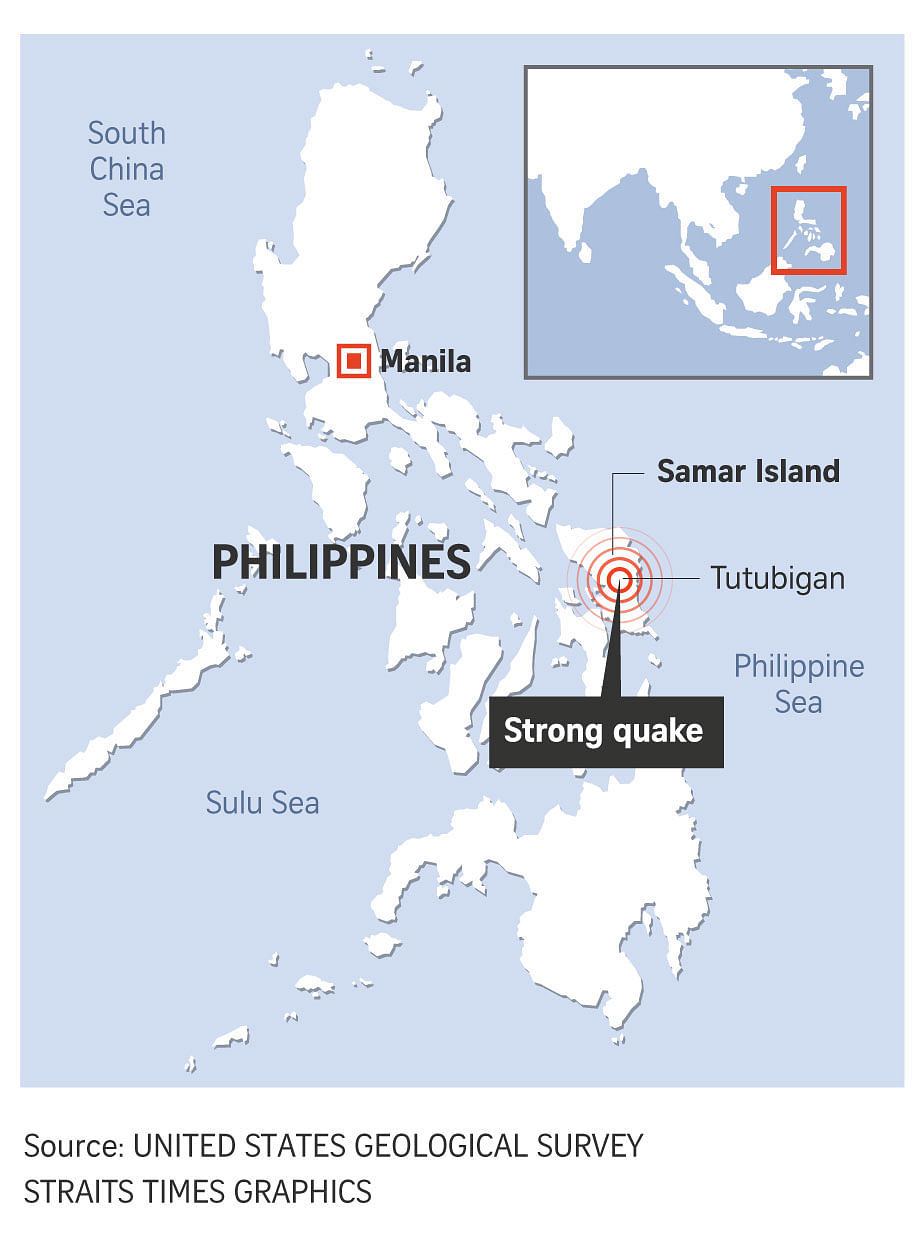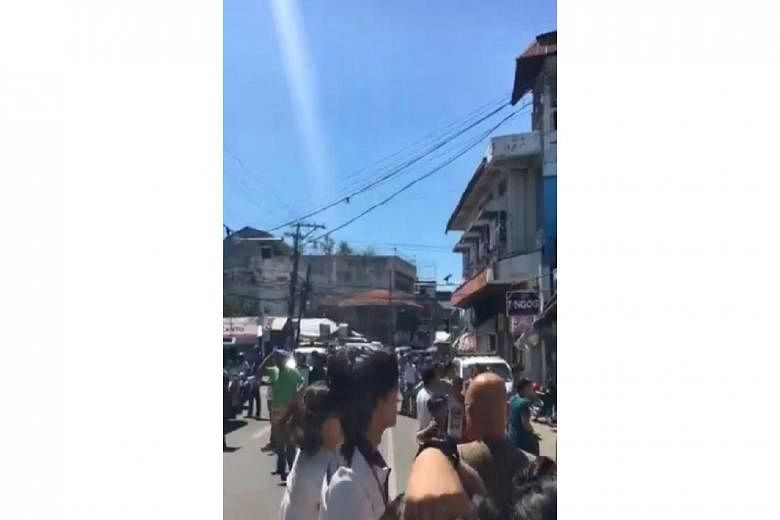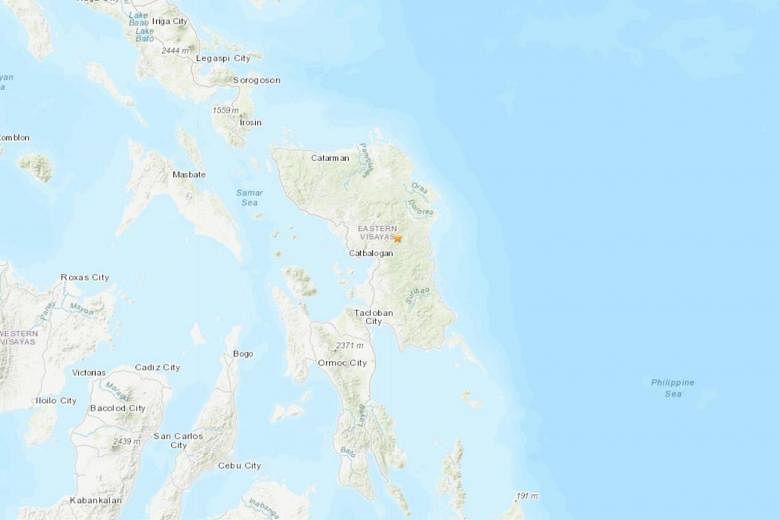MANILA - The death toll from a strong earthquake that rocked the Philippines on Monday (April 22) has climbed to 16, while an even more powerful tremor struck the country's central regions less than a day later.
Seismologists assigned a magnitude of 6.5 to the fresh quake on Samar island on Tuesday, which was stronger than the one that had struck the capital Manila and provinces north of it earlier.
There were no immediate reports of casualties, but an emergency response official said at least four were injured. Initial reports suggested that the damage was limited to cracked walls, shattered glass and deep gashes on some roads, but terrified locals were seen pouring out onto the streets.
Firefighters and rescuers, meanwhile, were digging through a crumpled mix of concrete and twisted metal, and using search-dogs to reach about a dozen people still trapped beneath a supermarket in Porac town, in Pampanga province, that caved in as Monday's quake struck at about 5pm.
Major-General Lenard Agustin, chief of the 7th Infantry Division, said: "Our dogs are barking, so that indicates the presence of life. We hope to recover more (survivors)."
Seven people were pulled out of the rubble alive, along with five bodies. "Every minute, every second is critical in this rescue," Mr Cris Palcis, a volunteer rescue-dog handler, told Agence France-Presse.

The National Disaster Risk Reduction and Management Council reported yesterday that the quake had claimed a total of 16 lives. Except for a six-year-old who died in San Marcelino town, in Zambales province, all were from Pampanga, a two-hour drive north of Manila.
Clark airport, which straddles parts of Pampanga and services 8,000 passengers a day, remained closed for a second day. Photos posted on Twitter showed wall linings and ceilings torn out of at least one building inside the airport.
President Rodrigo Duterte flew to Porac on Monday to check on rescue and relief efforts there.
The earthquake on Monday was felt in Metro Manila, a sprawling metropolis of 16 cities and home to over 12 million people. Seismologists put the tremor at magnitude 6.3 initially, but later downgraded it to 6.1. They have recorded nearly 500 aftershocks since then.
Images and videos posted on social media showed thousands of people scurrying out of office buildings and malls. One video showed a tall building with mirror claddings swaying as water from ruptured tanks cascaded down its sides.
By yesterday, rail services had been restored and buildings were again packed with office workers and shoppers.
The Philippines is part of the Pacific "Ring of Fire", an arc of intense seismic activity that stretches from quake-prone Japan through South-east Asia and across the Pacific basin.






